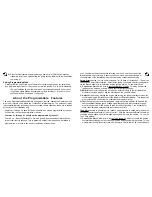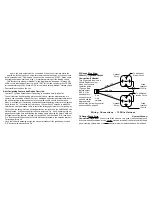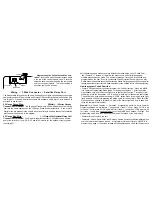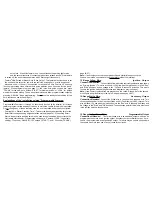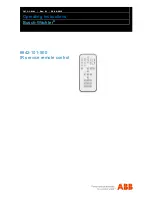
mined which control module wires will be used. Most installers will list these wires,
then "map out" the installation by locating and noting the target wires in the vehicle.
This will also determine the best location for the control module, which is mounted upon
completion of the installation.
The remote starting unit duplicates the actions that occur within the ignition switch
when you use your key to start the engine. Because of this, most of the main wiring
harness connections will be made at the ignition switch harness. The ignition switch wires
usually are high amperage circuits, which means that high reliability connections must be
made- soldering of all connections is recommended.
Caution!
Avoid the Airbag circuit! Especially avoid any harness or wires encased in Yel-
low or Red tubing or sleeves. Do not use a standard test light, as it can deploy an airbag or
damage on-board computers and sensors.
Main Module:
The Main Module should be mounted in a location close to the ignition switch (where
many of the wiring connections are made); typically, hidden behind the driver’s side
dash.
Receiver Module:
An essential part of the unit is the plug-in window mount Receiver Module, which also
contains the Valet Switch and Status Lights. The unit will not operate unless this Receiver
Module is plugged-in. Select a desired mounting location for the Receiver Module; optimum
performance is obtained by mounting this module high and unobstructed on the vehicle’s
glass, such as the windshield behind the rearview mirror. Make sure the glass surface is
clean and free of dust, grease, or debris. Peel the backing off of the adhesive tape
1) Turn the ignition key “On” (and leave it “on”).
2) Within 7 seconds press the Valet Switch 5 times.
The receiver unit’s Status Lights turn on, and the horn chirps once (if connected).
3) Within 15 seconds press the first transmitter’s “LOCK” and “UNLOCK” buttons together.
The unit will acknowledge the transmission by momentarily turning off the
Status Lights and chirping the horn 1 time.
4) Within 15 seconds press the next transmitter’s “LOCK” and “UNLOCK” together.
The Status Lights turn off and the horn chirps once.
Repeat this action for each remaining transmitter.
•
Have present all of the transmitters which are to operate the unit. When one
transmitter is programmed, all prior transmitters are erased- program all transmitters.
•
If the additional transmitters are for a second car, put the multi-car switch on these
transmitters only in the “B” position.
Exiting Programming Mode:
Simply allow the unit to time out of the programming mode, by not transmitting for 15
seconds; or, turn the ignition “Off” to exit immediately.
The MARS indicates its exit from programming mode by turning off the Status
Programming Transmitters
MARS can be operated by up to four transmitters. Replacement or additional
transmitters must be programmed to operate the unit. The multi-car operation capability
also requires that transmitters be programmed into the second vehicle (with the transmitter’s
multi-car switch in “B” position). Coding transmitters is a very easy process.









